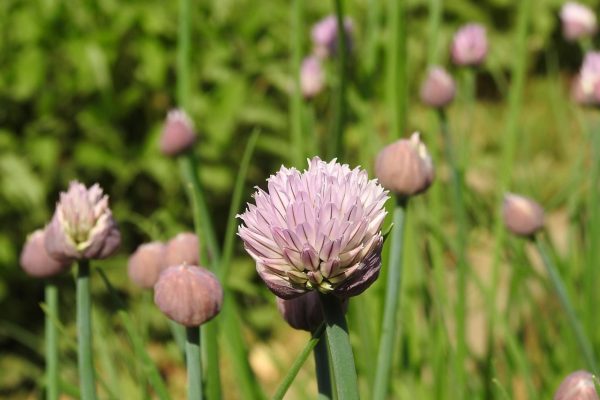Pesakh 5777 (2017)
For me, there is a strong link between the theme of first day of counting the omer (Hesed of Hesed), and the prayer Elohai Neshamah, which the Talmud teaches us to say the moment we wake up (Berakhot 60b). Here are the opening words of the prayer:
Elohai neshamah shenatata bi tehorah hi.
Atah veratah, atah yetzartah, atah nefakhtah bi, ve’atah me’shamrah be’kirbi …
“My God, the soul You have given me is pure.
You created it, You formed it, and You made it live within me [breathed it into me]. You watch over / preserve it within me …”
Why should this be the very first thing we do or say? What is so important about these words? And how do they link with Hesed of Hesed? To answer this, we need to take a closer look at the opening line.
Elohai: “God” is the very first word we say. So our first conscious act of the day is to put God into the forefront of our consciousness. God is the origin of everything, the essence of everything, and the ultimate destination of everything. Elohai, literally means God of me, or to me. Having both “God” and “me” in this first word establishes our fundamental relatedness to God. In our first moment of awareness, and word of the day, we recognize and affirm that we are bound together with God.
Neshamah is the second word spoken: “soul,” or perhaps “soul essence” or even “soul-ness.” Where does our soul essence come from? From Elohai. “Then the Lord God formed man [adam] of the dust of the ground [adamah], and breathed into his nostrils the breath/soul of life [nishmat hayyim]; and man became a living soul [nefesh hayyah].” (Gen. 2:7) Soul is our most essential connection to God. God’s breath is our breath. Our soul is made of God’s soul.
Shenatata bi comes next in the prayer – literally, “given, by/from You, to me.” Again, we see the intimacy between God and ourselves. “You” (God) and “me.” And soul is a gift—tehorah hi—a gift that makes purity our very essence.
Meditation 1 – Beginning Again
No matter how far we may stray, and however we “miss of the mark,” there is something that always connects us to God, and gives us the possibility of being “theotropic,” doing teshuvah, and growing back toward God. We can start again, every day, every moment if we have to. Rabbi Nathan of Nemirov, a student of Reb Nachman of Bratslav wrote:
“The Rebbe became accustomed to constantly begin anew. Whenever he fell from his particular level, he did not give up. He would simply say, ‘I will begin anew. I will act as if I am just beginning to devote myself to G-d and this is the very first time.’ This happened time and again, and each time he would start all over again. He would often begin anew many times in a single day.”
It is our God-given soul and purity that enable us to grow back toward God, give us a reason to do so, and real hope that return is possible. That God has given us this so generously is hesed, lovingkindness, in its purest form.
We can now lay out each idea, in the order it comes in the text, to produce a new ritual, a meditation to ponder or recite, with long soul-breaths between each phrase:
“God! … to me! … Soul! … is given! … by You! … to me! Purity is my essential nature.” [And we can add:] “And so, I can begin again.”
It is a kindness, and act of hesed toward ourselves to do this. There is an old Jewish story that likens our God-given soul to a bat melekh, a King’s daughter who has been entrusted to our care. In Leviticus Rabbah 34:3, Rabbi Hillel talks of his soul as a guest in his own home to whom he must show kindness. To look after our soul, the life we have been given, is an act of hesed toward ourselves. We reciprocate hesed for hesed, show conscious lovingkindness toward that part of ourselves that is itself the essence of lovingkindness. Knowing we have a soul, we can give ourselves another chance, as many times as it takes.
Meditation 2 – Deep Calling to Deep
And we can go further. This prayer is a reminder that all humans have a soul, and have this purity and God-essence at their core. We can choose to reaffirm this truth in our mind when we do not feel well disposed toward another person. This finds an echo in the Hindu greeting namaste. Literally meaning “bowing to you,” its larger sense is: “the soul in me honors the soul in you.” This is how I interpret the line from Psalm 42:7 tehom al tehom korei—“Deep calls to deep.” The soul of God and my soul call to each other, a dynamic to be found between human and the transcendent God, and also between human and the immanent God to be found in the soul of another human. Hesed calls to hesed.
I think of this also as how Jacob eventually sees his brother Esau in their moment of reconciliation. Indeed, it is, perhaps the very means by which Jacob is able to bridge the gap between them: “I see your face as one sees the face of God.” (Gen 33:9) This, too, provides material for a meditation. This can be done alone, either silently or aloud, holding in mind a person with whom we want to make connection or amends. It can also be done as a spoken meditation sitting opposite a partner; with time for silent reflection in between, the partners can take turns to speak the meditation. The periods of silence allow time for contemplation of the subtle meanings and insights that can arise from the meditation practice.
“Deep calls to deep. …. I see your face as the face of God.”
Chant (and round) – Elohai Neshamah
I wrote my setting of Elohai Neshamah as a meditation for myself, and for friends with whom I daven. When chanting Elohai Neshamah, I affirm my God connection, your God connection, and therefore our inherent connectedness. When we define our encounters as soul-to-soul, then we are choosing to recognize the essential goodness that lies at the heart of each other. For me, “hesed of hesed” means to recognize my soul and your soul as pure, and to look at you, and myself, with eyes of love.
Note: The audio track, sheet music, and further commentary about this text can be found at http://alexandermassey.com/elohai-nshamah/. On that page, you will find more about the symbolism embedded in the musical shapes, and simple symbolic meditative movements to accompany the chant.












